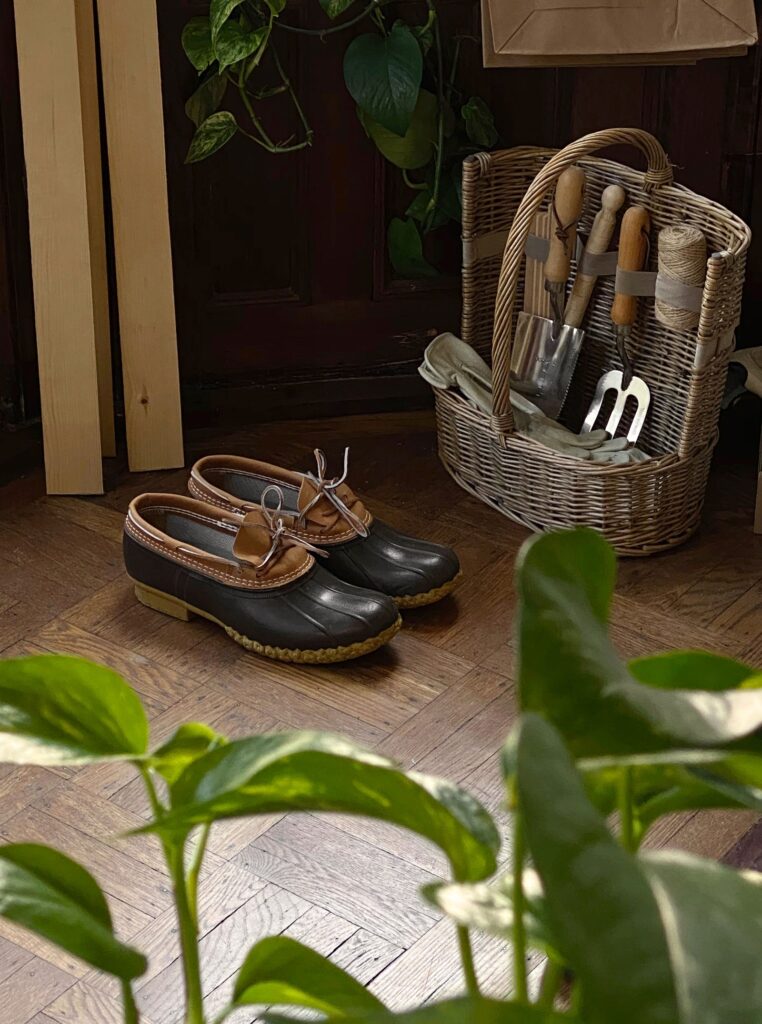The couple brought in furniture they already owned, learning a while back that timeless pieces beat trendy ones when budgets and aesthetics are on the line. They changed light fixtures and hardware in just about all the rooms to make them feel more modern, and removed six doors so that it all came across as more spacious. They passed over anything that didn’t conform to their rules, and found missing pieces thoughtfully. Figuring out “how to fill holes” was bound to happen, since the brownstone was 900 square feet bigger than their last apartment. “If there’s something we fall in love with, we first look to see if it can be found used, at a discount, or for a trade,” Charlie says. “If not, then we buy or commission the piece to be constructed.”
“We never had an outdoor space, and a big part of the move was to be able to garden,” Charlie says.
“There’s a giant learning curve with greenery, and we are still taking notes on what’s working and what’s not,” Charlie says. “It helped that we moved in the late fall last year. This allowed us to focus on the interior through the winter months and then work on the garden in the spring.”
The may not look as composed as the rest of the home, but it still showcases the couple’s foresight. “It was built around three main components, and the idea was to have the feeling of an overgrown formal garden,” Charlie says. “We first set stone trails around a hedge square and then added boxes for vegetables. In the middle of the square is a lemon tree surrounded by a bunch of different plants, and in the far corner is an outdoor daybed for naps.”
After so much careful planning, that corner seems only fair.
The office of a prop stylist is beautiful sight.
⚒ Do It Yourself
Swap out unsightly light fixtures and hardware “It’s relatively easy to swap out and hardware—especially doorknobs,” Charlie says. “Or you can hire someone via TaskRabbit or Craigslist to do this for you.”
You don’t have to hate your bathroom fixtures “This is also surprisingly easy to swap out,” he adds. “Make sure to save the old one and its parts in case you need to put it back when you move.”
Cover surfaces with shoji paper “This takes a bit of patience, and make sure to order a bit more paper than you think you need,” Charlie says. “Shoji paper can effectively cover strangely colored and patterned tile, walls, or cabinets without ruining the surfaces.”
Spring for custom light shades “You can take an old lamp and make a new custom light shade in any color pattern or size you can dream up for only a few hundred dollars or less,” he says.
Thankfully, most of the tiles in the bathrooms didn’t need to be covered. In another , the tiles remained but Charlie and Natasha swapped out the hardware and lighting.
Charlie and Natasha covered mismatched tile in the master bathroom with Japanese shoji paper that they cut and adhered to the wall. “This paper is slightly transparent and easy to remove when needed,” he says.
? Shop It Out
All products featured on Architectural Digest are independently selected by our editors. However, when you buy something through our retail links, we may earn an affiliate commission.
Akari 3A light by Isamu Noguchi, $400,
Womb Chair by Eero Saarinen, $4,620,
Shoji Japanese paper roll, $24,
Palo floor lamp by Michael Raasch, $1,501,
Matin table lamp by HAY, $149,
“The bedroom is very minimal,” Charlie says. “Lighting, color, and material are important to the design, and so is repetition. The Noguchi floor lamp ties in with our dining room lamp, and a black Skagerak stool repeats in a different color in the office. The dressing room is next door and has some repeating elements as well.”
“Every time you move and work on a new project, it forces you to confront how you live,” Charlie says. “It can give you clarity in many facets of life beyond simple design preferences.”





